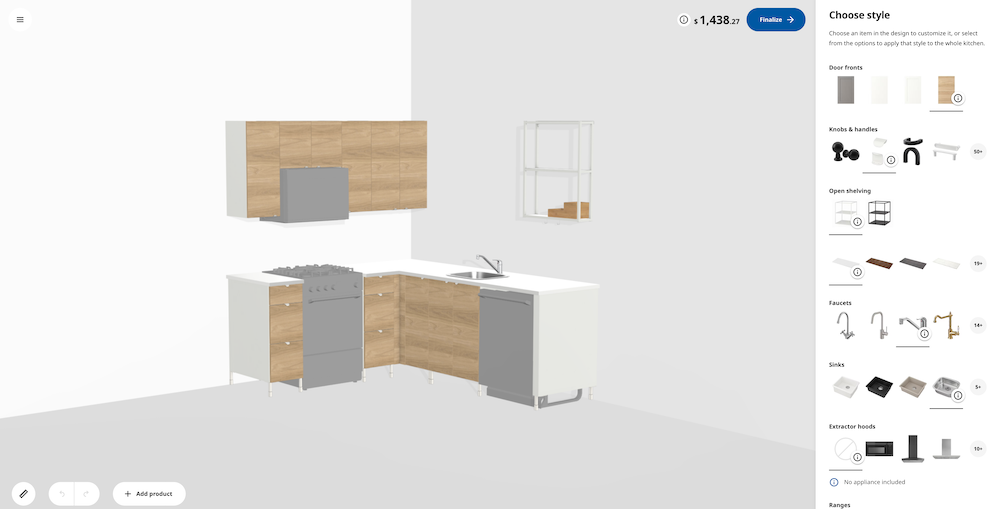

The Complete Product Page Toolkit
Download this product page toolkit to get everything you need to create engaging, high-performing product pages that drive sales and build trust with shoppers.
DOWNLOAD TOOLKITPIM
Manage all product content in one central system of record.
Syndication
Easily syndicate product content to every consumer touch point.
Enhanced Content
Enrich product pages with below-the-fold content and rich media.
Intelligence Suite
Bring AI-powered capabilities directly into your Salsify workflows.
Grocery Accelerator
Leverage the first-ever category-wide PXM accelerator in the grocery industry.
GDSN Data Pool
Synchronize standard supply chain, marketing, and ecommerce attributes globally.
Digital Shelf Analytics
Continuously optimize your organization’s product content syndication.
Catalog Sites
Share secure, on-brand, and always up-to-date digital product catalogs.
Automation and AI
Automate business processes and enhance Salsify workflows with AI.
PXM Platform, Integrations, and APIs
Integrate the PXM platform with the rest of your enterprise systems architecture.
Supplier Onboarding
Accelerate supplier onboarding while ensuring your schema requirements are met.
Product Listing
Sell products faster with Product Listing.
Content Enrichment
Increase online conversions with Content Enrichment.
Automation
Save time and increase operational efficiency with retail automation.
SXM Platform, Integrations, and APIs
Integrate the SXM platform with the rest of your enterprise systems architecture.
Syndication Network
Automate how you exchange product content data to the digital shelf.
Enhanced Content Network
Turn product pages into product experiences with Enhanced Content.
Commerce Platform Integrations
Create winning product experiences everywhere shoppers are, including on owned sites.
GDSN Data Pool
Synchronize standard supply chain, marketing, and ecommerce attributes globally.
Open Catalog
Connect to the digital shelf faster with an open, standardized, and free product catalog.
Resources
Resource Library
Explore our ecommerce resources to get everything you need to win on the digital shelf.
Blog
Read our blog to get actionable insights for navigating changing markets and industry demands.
Webinars
Watch our on-demand ecommerce webinars to gain expert advice and tips from our community of industry leaders.
Customer Blog
Gain the latest tips, industry trends, and actionable ecommerce insights.
Knowledge Base
Investigate our knowledge base to build your Salsify skills and understanding.
API
Examine our comprehensive API and webhook guides to start working with Salsify quickly.

Download the report to get expert insights, consumer research, and top industry trends.

The number of customers buying furniture and home goods online is steadily growing.
Between the growth of digital shopping options like buy online, pick up in store (BOPIS) and the rise of artificial intelligence (AI) tools that support a wide range of digital shopping experiences, brands must prepare to meet these new digital demands.
Offering customers an engaging online experience using technology can help them get the information they need to make final buying decisions.
Here are five tips for furniture and home goods brands to bring the in-store experience online.
Home and garden shoppers are driven by experiences, which is why many choose to go in-store to see products in person. Feeling the weight of a wine glass, sitting on a couch in a showroom, checking the firmness of a mattress — these experiences are what make showrooms so crucial for shoppers.
But brands can bring these showroom floor experiences online.
The global furniture and home goods retailer IKEA, for example, has successfully transitioned its in-store showroom experience to its direct-to-consumer (D2C) site. With its mobile app, customers can use augmented reality (AR) to see what products look like in their homes in real time.
The IKEA Home Planner allows customers to build virtual rooms using their own home dimensions and decorate using products from the retailer. Once the layouts are created, customers can then purchase the products within the rooms on the IKEA website.

Image Source: IKEA
Stop building boring product pages. Consider the in-store experiences that helped you make your last furniture and home goods purchase, and use content to recreate that experience online.
From videos highlighting the many features of a new home appliance and image galleries offering glamorous editorial photos to a comparison chart highlighting the various models and their unique characteristics, there are so many ways content can help customers experience products virtually.
Glassware company Libbey, for example, uses "wonderful empty shots, filled shots, lifestyle videos" to highlight its products' quality and unique features, says Ryan Griffith, senior director of ecommerce at Libbey.
This prioritization of product content helps establish brand quality and gives insights into the real-world application of its products — all virtually.
Storytelling is vital for reaching and engaging customers — and shopping for furniture and home goods products is no exception. Whether your brand sells furniture, home decor, mattresses, or storage solutions, brands can leverage their origin stories and missions to boost conversion.
These stories must also be consistent across sales channels. Whether a brand sells solely on its D2C site or across 20-plus top retailer sites, customers trust brands with consistent content.
Brands can also utilize personalization opportunities to boost engagement. Offering customers recommendations based on their search — such as “you might also like” or “visitors who looked at this product also looked at “ — can help them feel like the experience is personalized to them, pushing them further along the conversion path.
AI-based chatbots, virtual assistants, and other AI-based tools are some of the latest innovations driving increased online furniture and home goods shopping. These tools can support the shopping experience and provide customer support and service after the purchase.
Real-time access to sales and support people through chatbots and virtual assistants can mirror the experience of an in-store sales consultant — as long as brands build the chat experience correctly.
Not all brands can have a real person at the other end of a chat 24/7, but advanced AI and other chat technology can enable them to create an equally effective conversation flow that meets customers' needs.
When customers walk into a showroom at a physical store, they can see and touch the home and garden products they are considering. While there is currently no way to duplicate the experience of touch online, there are many other ways brands can build an online experience that parallels the in-store experience.
Customers demand choice. They also want tools that give them the ability to see how products look and might work in their homes. These options can help bring the in-store experience online, helping brands boost conversion and build brand loyalty.
The secret to making these online experiences is having engaging content and consistent messaging live across every priority channel, ensuring brands meet customers wherever they are online.

Download this product page toolkit to get everything you need to create engaging, high-performing product pages that drive sales and build trust with shoppers.
DOWNLOAD TOOLKITSalsify helps thousands of brand manufacturers, distributors, and retailers in over 140 countries collaborate to win on the digital shelf.
Standing out on the digital shelf starts with access to the latest industry content. Subscribe to Below the Fold, our monthly content newsletter, and join other commerce leaders.